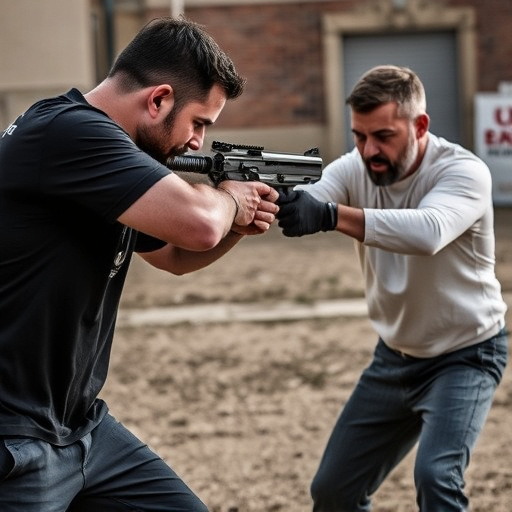Self-defense pepper spray, a powerful non-lethal tool, temporarily disables attackers through capsaicin, providing escape time. Proper usage involves understanding range, wind conditions, and follow-up actions like immediate medical attention if needed. Immediate care after exposure includes moving to safety, washing affected areas with water, staying calm, elevating the head/chest, applying cold compresses, and seeking medical advice for persistent symptoms. Legal regulations vary by location, dictating spray type, quantity, and carry zones—research local laws before purchasing or carrying. Safe handling practices are crucial, encompassing understanding mechanism, range, storage (out of reach, cool, secure), regular maintenance, and decontamination procedures.
“Staying safe in today’s world requires being prepared, and self-defense inflammatory spray devices offer an effective personal protection option. This comprehensive guide explores the power and purpose of pepper spray, providing insights into its immediate care after use. From understanding the mechanics to learning legal considerations, you’ll gain valuable knowledge on handling these devices responsibly. Discover best practices for safe storage and response strategies, ensuring you’re equipped with the right tools and techniques for immediate care in case of an emergency.”
- Understanding Self-Defense Pepper Spray: Its Power and Purpose
- Immediate Care After Using a Pepper Spray Device
- Legal Considerations and Safe Handling Practices
Understanding Self-Defense Pepper Spray: Its Power and Purpose
Self-defense pepper spray is a powerful tool designed to disrupt an attacker’s vision and breath, providing a crucial window of opportunity for escape or immediate care. Its primary purpose is to incapacitate an assailant temporarily, allowing users to gain control of the situation and seek safety. This non-lethal force option has gained significant popularity due to its ease of use and effectiveness in self-defense scenarios.
The power of pepper spray lies in its active ingredient, capsaicin, which irritates the eyes and respiratory system when inhaled. This immediate care solution can disable an attacker for several minutes, giving users a chance to retreat or call for help. Proper usage requires understanding the spray’s range, wind conditions, and the need for follow-up actions like ensuring the victim receives prompt medical attention if necessary.
Immediate Care After Using a Pepper Spray Device
After using a pepper spray device, immediate care is crucial to mitigate the effects and ensure swift recovery. The first step is to move to a safe location away from the attacker and any potential hazards. It’s important to note that immediate washing of eyes, nose, and mouth with plenty of water can help alleviate discomfort and irritation caused by the pepper spray.
Respiratory distress or difficulty breathing is a common side effect, so it’s recommended to stay calm, breathe slowly through your nose, and focus on deep, controlled breaths. If possible, elevate your head and chest to aid in respiration. Additionally, applying cold compresses to affected areas can help reduce swelling and pain. It’s worth noting that seeking medical attention is advisable, especially if symptoms persist or worsen, to ensure immediate care for pepper spray exposure.
Legal Considerations and Safe Handling Practices
The legal landscape surrounding self-defense inflammatory spray devices, often referred to as pepper spray, varies significantly across jurisdictions. It’s crucial to understand local laws and regulations before purchasing or carrying such a device. In many regions, pepper spray is legal for personal protection with certain restrictions on the type of spray, quantity, and where it can be carried. However, some areas have specific no-go zones like schools, government buildings, or public transport, while others may require permits or registration.
Safe handling practices are paramount when it comes to immediate care for pepper spray. Users should familiarize themselves with the device’s operating mechanism and understand the range and effectiveness of each spray. Storage is also critical; keep it out of reach of children and in a secure, cool place to maintain its potency. Regular maintenance, including inspecting for damage and replacing expired components, ensures the spray remains effective when needed most. Additionally, understanding decontamination procedures after use, such as having eye wash on hand, is essential for minimizing discomfort and potential long-term effects.
Self-defense pepper spray is a powerful tool that can provide individuals with an effective means of deterring potential threats. Understanding its operation, proper handling, and immediate care after use are essential components of responsible self-defense. By adhering to legal guidelines and safe practices, users can ensure they are prepared and capable of defending themselves effectively. When used appropriately, pepper spray can be a game-changer in dangerous situations, offering peace of mind and an extra layer of protection. Remember, proper immediate care after deployment is crucial for maximizing its effectiveness, ensuring the safety of both the user and any bystanders.
